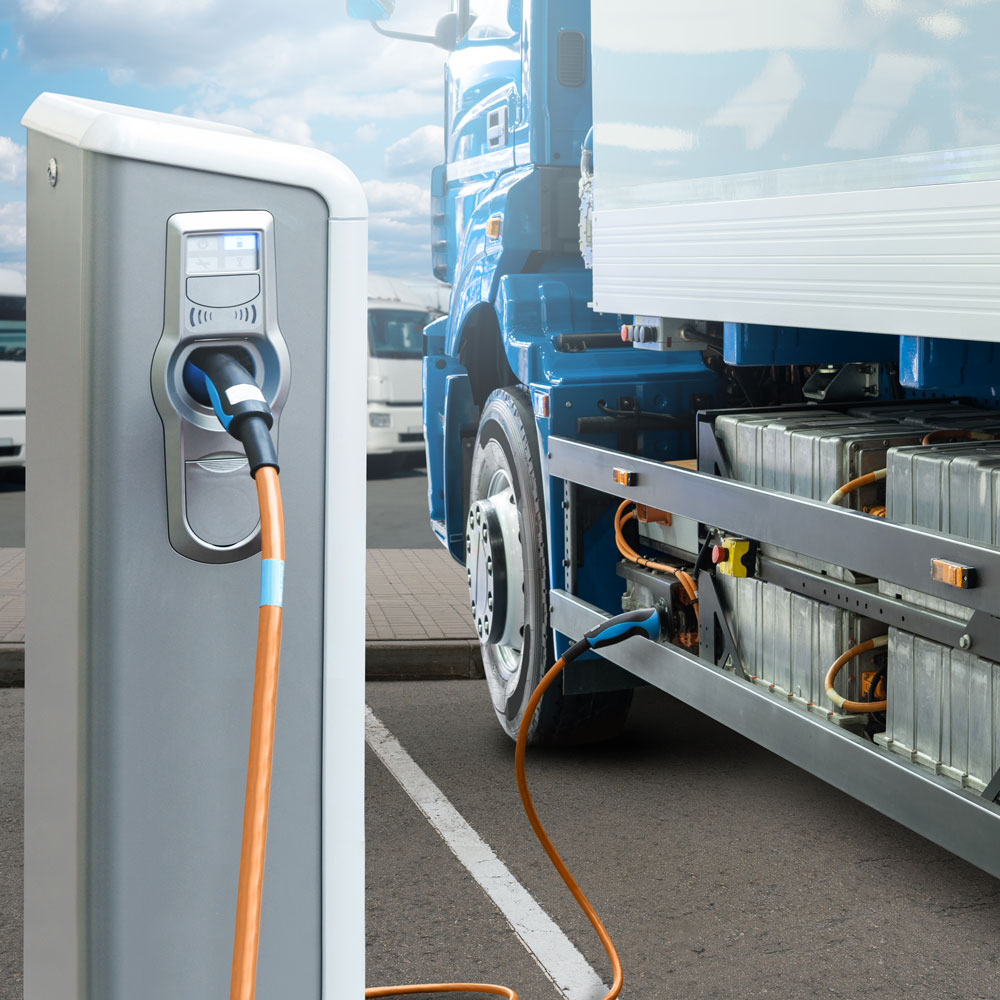What is Transportation Electrification?
Transportation electrification involves transitioning personal cars, commercial fleets of cars and trucks, and public transit like buses and trains from fossil-fueled vehicles to ones powered by electricity. Transportation electrification will fundamentally reshape our transportation and power systems by reducing demand for gasoline and increasing the demand for electricity. The transition to electric vehicles provides substantial economic, environmental, and public health benefits, and the faster the transition occurs, the faster those benefits are realized by our communities. When those vehicles are powered by clean electricity, they can help us make substantial progress in curbing carbon pollution to address climate change.

Transportation Electrification and Climate Change
Transportation electrification is a key strategy in the fight to avoid the worst impacts of climate change. As we continue to decarbonize the power sector in the Interior West, we can use that clean electricity to power electric vehicles, resulting in even greater reductions in the harmful fossil fuel emissions that cause climate change.
Currently, electric vehicles emit two to five times less greenhouse gas pollution than gasoline powered vehicle in the Interior West, depending on the source of the electricity. The transition to clean electricity resources across the region magnifies the benefits of transportation electrification.
Increasing the number of electric vehicles on the road is key in decarbonizing our transportation sector as we continue to transition away from fossil-fueled electricity. The power and transportation sectors now account for more than 66% of the country’s carbon emissions. Decarbonizing both sectors is critical for reaching a zero-carbon economy by mid-century and avoiding the worst impacts of climate change.
In WRA’s region of Arizona, Colorado, Nevada, New Mexico, Montana, Utah, and Wyoming, transportation is the second largest source of emissions behind the electric power sector; natural gas used in residential and commercial buildings and by industry is the third largest source of emissions. Our strategies to decarbonize the electric sector and electrify transportation will tackle 66% of the region’s total emissions.
The State of the Transportation Electrification Market
Transportation electrification is rapidly accelerating across the Interior West, the country, and the globe. A growing number of states are making commitments to electrify their fleets of cars and trucks and passing legislation to foster increased use of electric vehicles. Many major automakers are recognizing that the future is electric, investing billions of dollars in research and development, producing more diverse models of electric vehicles, and even committing to sell only electric models in the future. An increasing number of electric utilities, at the direction of state legislatures, are investing millions of dollars to help encourage access to charging infrastructure on public roadways, in apartment buildings, and for low-income communities. Although overall auto sales slowed due to the COVID-19 pandemic in 2020, electric vehicle sales still shattered previous annual records even as consumers bought fewer gasoline powered vehicles, demonstrating a long-term resilience that even the most optimistic projections did not foresee. Transportation electrification is an increasingly viable solution to address climate change as:
- Electric vehicles continue to become cheaper and more divers.,
- Governments continue to support electric vehicle development.
- Electric utilities, governments, and private entities continue building a robust network of charging stations.
Barriers to Transportation Electrification
Despite growing momentum towards transportation electrification, several barriers remain:
- Limited consumer awareness and familiarity.
- Lack of available charging infrastructure.
- Constrained model availability.
- Higher upfront costs.
Electric utilities are critically positioned to address these barriers by helping to build a more robust network of charging stations and ensuring electric vehicles are well integrated into the electric grid. A central focus of WRA’s advocacy effort is to work with electric utilities to invest in electric vehicle adoption in their service territories. We are working with a broad coalition of states, charging companies, and electric utilities to address these barriers and make the Interior West a leading example in transportation electrification for the rest of the country.

